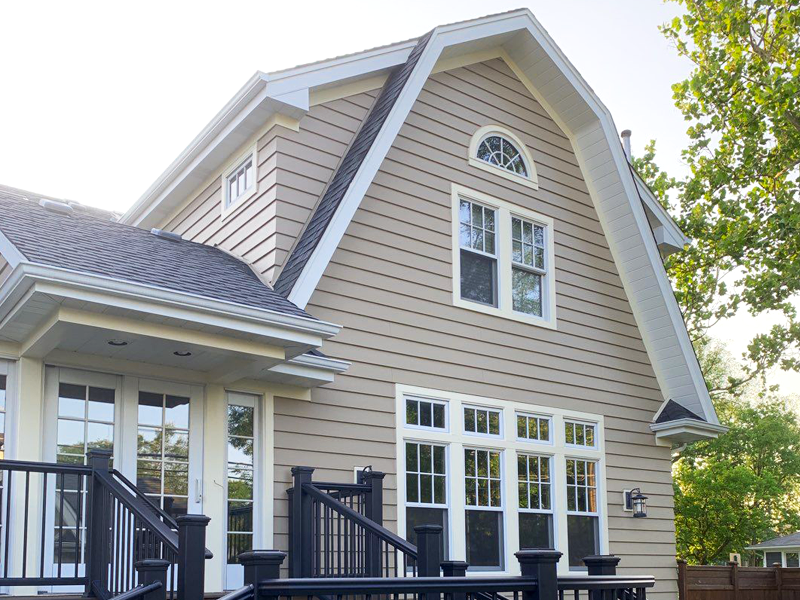
There’s no getting around it: Living in the Midwest, we experience one weather extreme to the other. And keeping a comfortable temperature in the home can get expensive. If you have an unfinished attic, giving it proper insulation is one of the simplest ways to manage heating bills - every season.
Are you using your attic for storage? If so, transfer those items to another space because the simplest and fastest way to insulate an attic is to add material to the attic floor.
There are several insulation types to choose from, such as spray foam, loose fill and batts (rolls). Does your existing insulation measure up? Will you need to replace insulation, or add to it?
Before checking the condition of your attic's insulation, there are a few aspects to take into consideration:
Area where you live.
Why? Because different climates require different R-values - an insulating material's resistance to conductive heat flow measured in terms of its thermal resistance. The R-value depends on the type of insulation, its thickness, and its density, and the higher the R-value, the greater the insulating effectiveness. So, if you reside in the Midwest region, specifically northern half of Illinois, the recommended attic insulation level is between R-38 to R-60 per the Department of Energy (DOE) and the International Energy Conservation Code (IECC). We explain further.
How old is your house?
Typically, older buildings require additional insulation. Not only because of the age and wear, but due to technological differences used now and then.
Now that you are familiar with basic knowledge about attic insulation, we can start the process. Determining the type and R-value of insulation material.
There are a few different types of insulation that is commonly used in attics:
- Fiberglass (blown): light-weight yellow, pink or white loose fibers
- Fiberglass (batts): batts or “blankets” light-weight yellow, pink or white fibers
- Cellulose (blown): small gray flat pieces of fibers, they look like newsprint
- Rock Wool (loose): gray, near white, or has black specs
- Foam (sprayed): looks like whipped cream
The default per-inch R-values of the materials listed above are:
- Fiberglass (blown): 2.2 – 2.9 (use 2.5 to multiply)
- Fiberglass (batts): 2.9 – 3.8 (use 3.2 to multiply)
- Cellulose (blown): 3.1 – 3.8 (use 3.7 to multiply)
- Rock Wool (loose): 2.2 – 3.3 (use 3.0 to multiply)
- Foam (sprayed): 3.6 – 8.2 (use 5.0 to multiply)
Determine R-value of existing insulation:
To find the R-value of the existing insulation in your attic, multiply the number of inches of insulation (depth) by the R-value for your particular type. The recommended insulation on a standard 2” by 8” joist (which is actually 1.5” by 7.5”) is R-38 to R-49 – that means the depth should be between 13” and 18”. Anything below would be considered poorly or inadequately insulated.
As mentioned before, different climates require different R-values. By dividing the recommended R-value for your area by the R-value of your particular type of insulation, you find that an attic should have on average:
Warm Climates (R-30 to R-49):
- Fiberglass (blown): 14” – 18”
- Fiberglass (batts): 11” – 14”
- Cellulose (blown): 11” – 13”
- Rock Wool (loose): 12” – 18”
- Foam (sprayed): 5” – 11”
Moderate Climates (R-38 to R-60):
- Fiberglass (blown): 17” – 22”
- Fiberglass (batts): 13” – 17”
- Cellulose (blown): 13” – 16”
- Rock Wool (loose): 15” – 22”
- Foam (sprayed): 6” – 14”
Cold Climates (R-49 to R-60):
- Fiberglass (blown): 19” – 25”
- Fiberglass (batts): 14” – 19”
- Cellulose (blown): 14” – 18”
- Rock Wool (loose): 17” – 25”
- Foam (sprayed): 7” – 15”
While you can’t have too much insulation, older homes often don’t have enough. Make sure your house is properly insulated and keep your energy bills low. Also, gaps in the attic, or between floors will allow heated, or cooled air to escape – making any insulation you add essentially useless.
Other items to keep in mind before insulating:
Fix roof leaks
Water creates a breeding ground for mold and mildew and blocks heat flow. Look for water stains, damp or moldy spots on attic joist and existing insulation as an indication of leaks.
Create a safety gap on light fixtures
Use hardware cloth, metal flashing or scrap plywood to create a safety gap for all fixtures.
Direct exhaust fans and vents to the exterior
Make sure that any exhaust to an attic space is direct out to the exterior, so that humid exhaust air doesn’t get trapped in the insulation and ruin it.
Having proper insulation can help stabilize your home’s indoor temps to keep cooling needs in check. Looking for help with remodeling around the house? Let us know what you need.
Tags
Subscribe to Pro Home 1's Blog





Comments